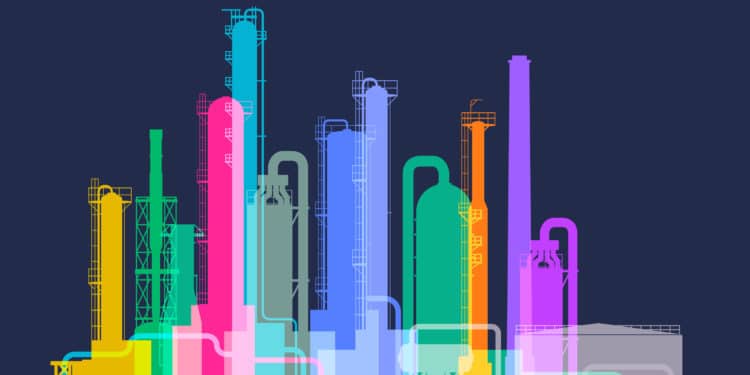Silicon Valley Bank – 16th largest in the US – is the latest casualty of the Fed assault on inflation. It was regulated as a regional bank, and these are typically local, specialising in one sector (e.g. agriculture). SVB also specialised in one sector – tech – but it had a global reach. With assets of less than $250bn, they benefited from looser regulation and built a loan portfolio of start ups with limited assets, patchy cash flows, and no profits. Customers included Biotech, Fintech, Crypto and even California wineries.
3G has been a major legacy network overhead and consumer of spectrum bandwidth in the US. But as 5G moves into high gear the Big 3 wireless carriers needed to reallocate capacity to fully support the 5G network, and free up resource for the development of 6G and beyond. AT&T stopped 3G services in early 2022 and T-Mobile started to retire its older networks last summer. This month, Verizon became the last of the Big 3 to shut down its 3G network – meaning 3G has effectively ended in the US.
High inflation and rate hikes were expected to hit the annual Black Friday sales, but early reports show mostly good news: online sales hit a record $9 billion, and Adobe Analytics figures show ebbing pandemic health concerns with shoppers returning to in-store purchases. But the improvement could be short-lived, reflecting relief at a lockdown-free holiday period and the lure of short-term promotions.
Global property is at a crossroads. For example, the build-to-rent sector is strong as urban rents spike around the world; and with general price levels rising at close to double digits, there is renewed interest in property as an inflation-proof real asset. But rising mortgage rates are hitting starter and family home markets globally.
With warnings that inflation could exceed 20% by the start of next year, plans to introduce a tighter rent cap for tenants in the social rented sector are being discussed, to try help insulate some of the most vulnerable from the current cost of living crisis. However, this rent cap could negatively impact housing associations and affect their ability to maintain and improve existing residents’ homes and deliver more new affordable housing.
The Basic Materials Industry includes Chemicals, Metals, Mining, Forestry and Paper. Output prices for these sectors have been very volatile in the past 12 months, reflecting recent rapid structural changes in the global economy. Metals for steel and alloy production – Aluminium, Iron Ore, Lead, Zinc, Manganese, Molybdenum and Tellurium are mainly down. Rare earths used in mobile phones, EVs, batteries, catalytic convertors, and flat screens – such as Rhodium, Titanium, Lithium, Palladium, Neodynium – are higher, with Lithium up over 200% YoY. Mined fuels such as Coal are up nearly 150% over the past 12 months in response to the Ukraine war.
After a record run of 14 months of net improvements, this sample of more than 400 US Health Care companies has recorded three months with a CCI below 50, indicating that downgrades now outnumber upgrades. The changing balance between upgrades and downgrades in US Health Care is mirrored in Figure 2, showing that the long decline in average credit risk – measured by default probability (axis inverted) – has been faltering, with recent periods of credit deterioration.
According to The Economist, just 10% of the world’s population is fully vaccinated against Covid. This average conceals a huge global divide – for low-income countries, the average is just 1%; it is over 30% for the most advanced economies. Even in the developed nations, the formula for vaccine rollout success is a complex blend of politics, economics, public health preparedness and national attitude. But it is clear that the economic bounceback will be led by the largest and most developed economies.
Lumber prices have tripled since June 2020, adding an average of $24,000 to the price of a new US home; and reports from Canada show that timber poaching is increasing as a result. Sawmills were idle during the pandemic lockdown, so the usual inventory build over winter did not happen. These technical constraints on supply are colliding head on with a spike in demand as housebuilding restarts, with the added pressure of the post-COVID desire for larger houses.
Credit Benchmark have released the February Credit Consensus Indicators (CCIs). The CCI is an index of forward-looking credit opinions for US, UK and EU Industrials based on the consensus views of over 30,000 credit analysts at 40 of the world’s leading financial institutions. Last month suggested improving sentiment for EU Industrials, but this month’s CCI has dropped back below 50 and sits lower than the US CCI.
A growing divide in credit quality and default risk for the US and UK retail sectors emerged in recent years. Since Credit Benchmark began tracking data on the retail sector, default risk has been higher for the UK than for the US, a trend that persists with the latest monthly update. In recent months the gap in default risk between US and UK retailers has been getting wider.
The Oil & Gas sector was in trouble even before the first Covid lockdown, and it was one of the worst credit performers in 2020. A perfect storm of falling oil prices, the spectacular rise of alternative energy sources, and the effective collapse of global tourism took many oil companies to the brink of bankruptcy and pushed some of them over the edge. Recent agency downgrades have cited climate change and permanently higher oil price volatility; agency ratings for some of the US majors are now aligned with the more conservative bank consensus.
Credit Benchmark have released the January Credit Consensus Indicators (CCIs). The CCI is an index of forward-looking credit opinions for US, UK and EU Industrials based on the consensus views of over 30,000 credit analysts at 40 of the world’s leading financial institutions. Drawn from more than 800,000 contributed credit observations, the CCI tracks the total number of upgrades and downgrades made each month by credit analysts to chart the long-term trend in analyst sentiment for industrials.
The 2020 pandemic brought various forms of disruption, hardship and human tragedy. Governments and businesses around the world had to rely on trial and error to find the best response. There have been some high-profile corporate winners – companies that support home working, online delivery and logistics providers, packaging firms, some pharmaceuticals. But Covid has highlighted economic and social inequalities, and added “health poverty” to the lexicon.
Few industries have been impacted more severely by the COVID-19 pandemic than Travel & Leisure. According to Credit Benchmark, which captures the credit risk views of over 40 of the world’s leading financial institutions, 44% of companies in the global Travel & Leisure sector fell from investment grade to high yield between March and November of 2020. That means the consensus credit risk scores for these so-called ‘fallen angels’ fell below the bbb- threshold at some point during the pandemic.
Problems in the energy sector are far from new, and are continuing to worsen slightly each month. This is particularly true for the US and UK energy sectors which have seen a great deal of volatility and distress in the last year or so. The picture isn’t so dire for the EU energy sector however.
Credit Benchmark have released the December Credit Consensus Indicators (CCIs). The CCI is an index of forward-looking credit opinions for US, UK and EU Industrials based on the consensus views of over 30,000 credit analysts at 40 of the world’s leading financial institutions.
Traditionally, corporate supply chain information has been patchy. But over the past few years, Bloomberg have collected extensive supplier and purchaser data to shed light on the huge network of linkages between global coporate giants and the myriad of small and/or unquoted and unrated companies that form the fabric of the global economy.
Credit Default Swap (“CDS”) prices are often cited as a proxy for solvency risk. When CDS are not available, consensus credit estimates can be a robust alternative – provided they are adjusted by the market risk premium. GSIBs are the most scrutinised financials in the world. From a solvency perspective, regulators and investors are as well informed about these firms as it is possible to be.
US General Retailers may not yet feel like the proverbial child in the toy store, but for the first time in a long time they have some cause for hope. Sales continue to rise, even if the pace is less than anticipated. A lack of in-store shopping has, in some instances, transferred to online shopping.


























